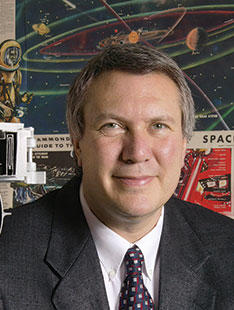New Optimism at Lab
After a failure in its chief experiment, Plasma Physics Lab works to rebuild

Two years after equipment failure forced the shutdown of the Princeton Plasma Physics Lab’s flagship fusion experiment, the University says recent developments have put it in a better position to proceed with repairs and to seek to extend the federal contract to manage the lab.
A malfunctioning magnetic coil led to the shutdown in July 2016 of the NSTX-U experiment after a $94 million upgrade designed to double its magnetic field strength and plasma current. Princeton operates the lab under contract to the U.S. Department of Energy, which ordered a review to identify “all design, construction, and operational issues” and the development of a corrective action plan.
Extensive reviews found “reason to believe that engineering and quality-assurance issues may have been involved,” said David McComas, the University’s vice president for the lab, and three sets of magnets must be replaced.
PPPL now has new heads of engineering and of quality assurance and new procedures to analyze design proposals, McComas said, and the University has expanded its oversight of the lab. “We are trying to change aspects of the culture — the level of engineering rigor, and the rigor of operations and quality assurance,” he said. “These are underlying things in how you design and build equipment and were not adequate for NSTX-U, at least in some areas.”
In addition, PPPL is in a stronger position financially after 38 of the approximately 500 lab employees accepted a voluntary separation package early this year in “targeted areas where there might be more capacity than expected future funding,” he said.
McComas cited three reasons for optimism:
A recent DOE review found that PPPL is “on the right path” to have the capabilities to rebuild the experiment correctly, he said, and there is still a “compelling” reason for its intended research.
A midterm grading report from the energy department, which grades all the national laboratories it oversees at the end of each year, showed improvement. Princeton was given a special assessment to provide an updated federal review after receiving poor grades the past three years, McComas said, and the lab is now rated acceptable in all areas.
This is important because Princeton’s contract to manage the lab — valued at $100 million per year — runs through next March, and the University is working to encourage the DOE to extend the contract.
Steven Cowley *85, an international authority on fusion energy, was hired as lab director, effective July 1. Cowley, a staff scientist at PPPL from 1987 to 1993, led the fusion-research program for the United Kingdom from 2008 to 2016. Stewart Prager stepped down as lab director in the wake of the NSTX-U failure.
The lab has been “very honest about issues that we’ve had and what we’re doing to fix them,” McComas said. “If we’re given the opportunity to fix NSTX-U, the lab has the chance to really get it right and have an outstanding experiment to run for many years. I think the future of the lab is extremely bright.”











1 Response
Daniel Jassby *70
7 Years AgoPlasma Palsy
About every two years for decades, PAW has published an article extolling the glorious activities at PPPL that were supposed to establish an energy utopia. The last paean was in the issue of April 6, 2016, but this sequence of dazzling nothingburgers was disrupted when the lab’s “flagship” project (N$TX-U) damaged one of its magnet coils in July of that year.
That incident occurred not long after an extensive upgrade of N$TX that required $94 million and five years (!) to complete, and glorified in the April 2016 paean. Much of PPPL has been paralyzed since.
But it’s not just a mechanical implosion that triggered the current stagnation. It’s the absolute inability of PPPL to recover from a relatively minor issue by spending two years and many tens of millions of dollars solely on navel contemplation. And the prospect of more of the same.
The present status of N$TX-U and PPPL is summarized in the following verse:
A tale of extreme bungling
with now continuous bumbling.
Lab directors are fumbling,
from Nassau there’s great rumbling
lest funding take a drubbing,
but DOE is mainly grumbling.
Review committees are plumbing
while engineers are still stumbling
and most staff is mumbling
as delays are truly numbing.
The Lab is now crumbling
and reputation goes tumbling,
but so far there’s no humbling
that’s needed after such pummeling.